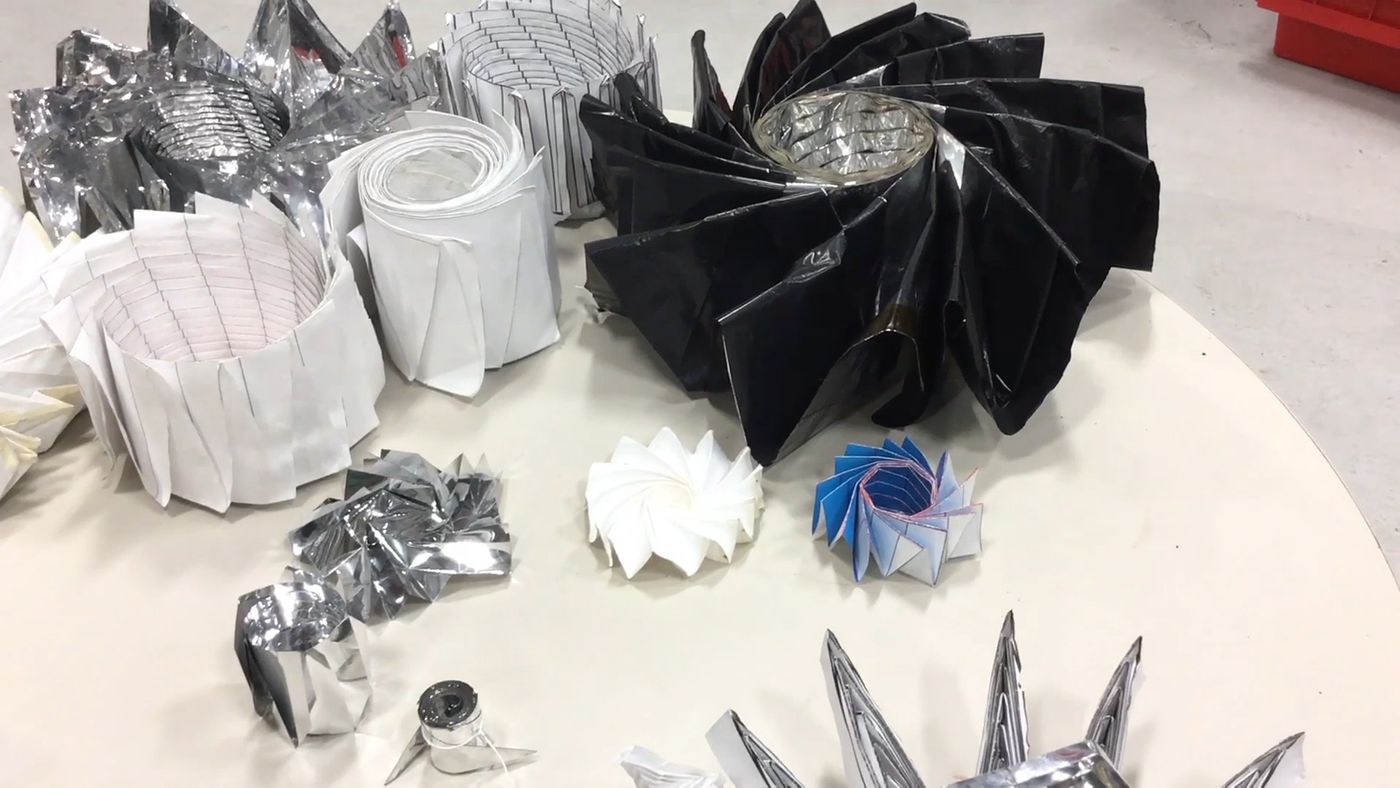Origami is Helping NASA Create Next-Gen Spacecraft Technology
An ongoing problem for NASA, SpaceX, and other entities involved with space travel is packing as much equipment as possible into a single rocket to reduce launch costs and make space exploration more readily accessible.
One of the ways we can do this is by reducing the size of scientific instruments. While this is already happening in the form of cubesats and smallsats, NASA is also experimenting with an ancient Japanese art form known as origami to accomplish similar results.
Image Credit: NASA/JPL-Caltech
Although you’ve probably tinkered with origami on your own with a few sheets of loose paper before, NASA is taking things to the extreme by folding various kinds of materials to make them more friendly for space travel
The Starshade is just one example; it’s a piece of equipment that, as the name implies, blocks out a certain amount of starlight against an object in space (like a satellite or a telescope).
Because such a large object would be a magnet for meteorite strikes that would render it useless, researchers from NASA's Jet Propulsion Laboratory in Pasadena, California are experimenting with origami methods to make the shade fold or unfold on demand. Doing so actually reduces its surface area and mitigates the chance of a meteorite striking it.
"We use multiple layers of material to block starlight, separated by some gaps so that, if we do get hit, there's a good chance that there won't be a line-of-sight puncture," said Manan Arya, one of the technologists working on the Starshade project.
NASA notoriously uses origami methods in their spacecraft, such as in folding solar arrays and inflatable modules. These objects stay small during storage in space transportation but expand once in outer space to take up as much volumetric space as they need to.
Related: New folding solar array system sent to the International Space Station for testing
"Once I realized this is how you fold spacecraft structures, I became interested in origami," Arya continued. "I realized I was good at it and enjoyed it. Now I fold constantly."
Arya works with JPL intern Robert Salazar, who also develops new and innovative ways to fold larger things into smaller things for the sake of science.
"With most origami, the magic comes from the folding. You can't design purely from geometry. You need to know the qualities of the material to understand how it will fold," Salazar explained.
"There are so many patterns to still be explored. Most designs are for shapes that fold flat. Non-flat structures, like spheres or paraboloids, largely haven't been done."
While origami might seem easy on paper (no pun intended), it's these guys’ jobs to find out how to make the technique work with more complex materials and surfaces.
Origami-based spacecraft is still a relatively new idea that still needs extensive field-testing. Nevertheless, advancements in this sector are imperative. Not only will it make future spacecraft more versatile, but it could also help humankind achieve crewed missions to Mars sooner than previously imagined.
It should be interesting to see how else origami will contribute to the realm of space exploration as time and research progresses.
Source: NASA









